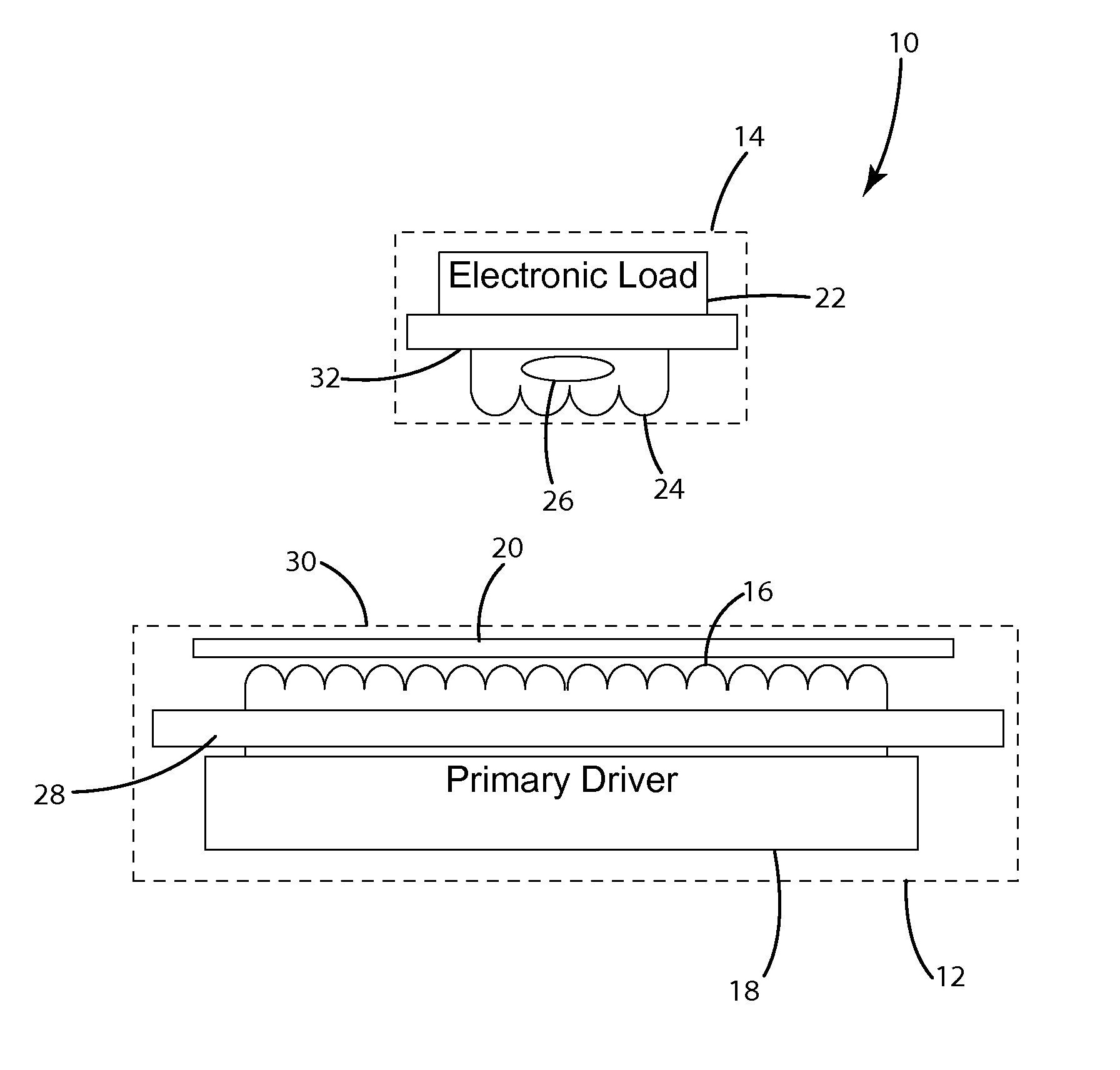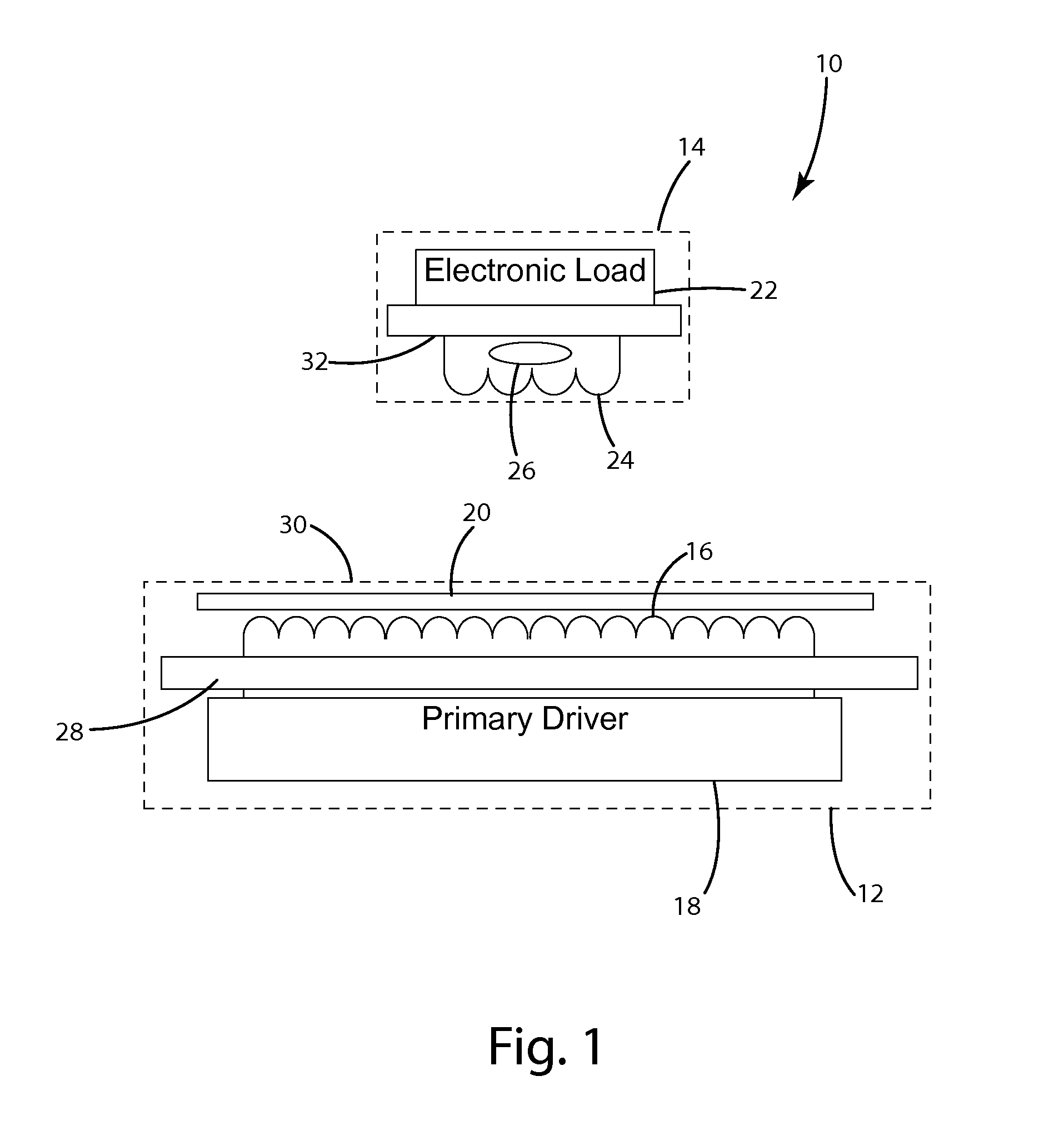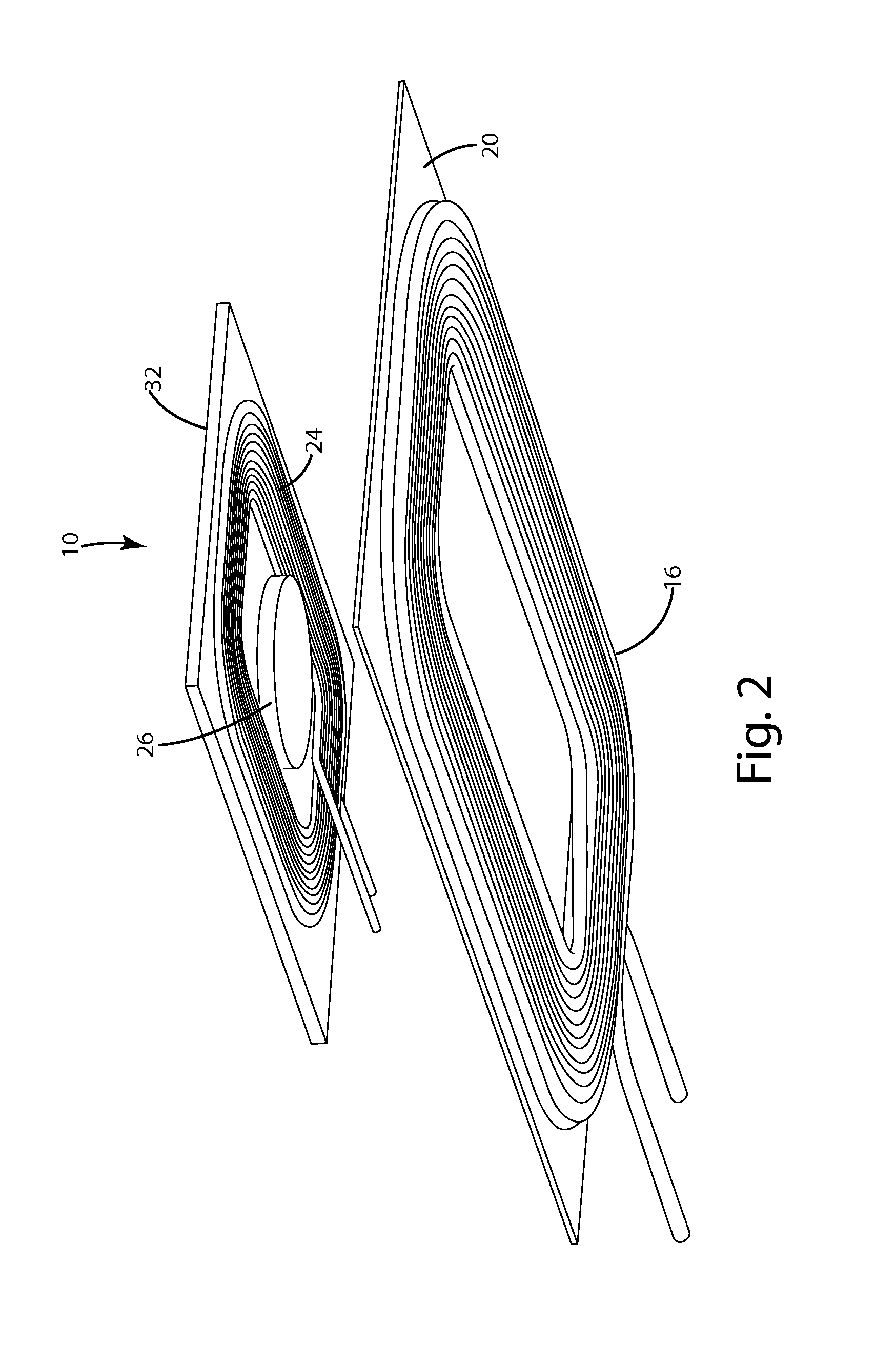Selectively controllable electromagnetic shielding
a technology of electromagnetic shielding and selective control, applied in the field of selective control, can solve the problems of increasing stray electromagnetic fields, affecting the safety of users, and unable to achieve the desired positional freedom of systems, etc., and achieves the effects of removing the shielding properties, high permeability, and sufficient strength
- Summary
- Abstract
- Description
- Claims
- Application Information
AI Technical Summary
Benefits of technology
Problems solved by technology
Method used
Image
Examples
Embodiment Construction
[0051]A wireless power supply system incorporating an embodiment of the present invention is shown in FIG. 1. The wireless power supply system 10 generally includes a wireless power supply 12 and a remote device 14. The wireless power supply 12 of this embodiment includes a primary coil 16, a primary driver 18 and an intermediate magnetic shield 20. In use, the primary driver 18 applies an alternating signal to the primary coil 16 to produce a magnetic field. The remote device 14 of this embodiment includes an electronic load 22, a secondary coil 24 and a permanent magnet 26. When in the presence of an appropriate magnetic field, a current is induced in the secondary coil 24 to provide power for the electronic load 22. The induced power may be used to charge the remote device 14 and / or to directly power the remote device 14. The illustrated intermediate shield 20 is a magnetic shield that can be selectively saturated by a magnetic field to provide an aperture in the shield. In a non...
PUM
| Property | Measurement | Unit |
|---|---|---|
| electromagnetic field | aaaaa | aaaaa |
| permeability | aaaaa | aaaaa |
| magnetic field | aaaaa | aaaaa |
Abstract
Description
Claims
Application Information
 Login to View More
Login to View More - R&D
- Intellectual Property
- Life Sciences
- Materials
- Tech Scout
- Unparalleled Data Quality
- Higher Quality Content
- 60% Fewer Hallucinations
Browse by: Latest US Patents, China's latest patents, Technical Efficacy Thesaurus, Application Domain, Technology Topic, Popular Technical Reports.
© 2025 PatSnap. All rights reserved.Legal|Privacy policy|Modern Slavery Act Transparency Statement|Sitemap|About US| Contact US: help@patsnap.com



